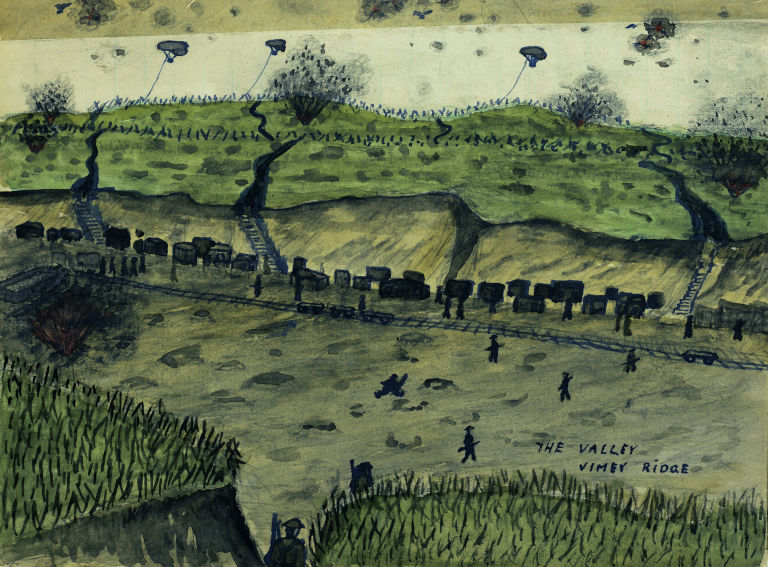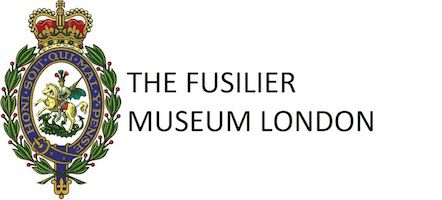In the following extract abridged from Albert Clayton’s recently discovered WW1 memoir Long Before Daybreak he is reminded that not long before joining the war he had been an ambitious young art student.
In mid-October we were suddenly called away from the quiet sector of Achicourt, and rushed back into the fray of the Somme Battle, now slowing up in the autumn rains. This time we were actually carried part of the way in lorries and old London buses, the last part however being as usual, on foot.
After foot-slogging for hours through devastated country - this was all newly captured ground - the head of the column turned off the rutted road just at dusk, onto bare open land, without the vestige of a hut or tent in sight, and stopped. We had arrived at wherever it was. Before long several nice big fires were crackling merrily in the dark, and groups of men gathered round to make themselves a can of tea on the embers. The tea water, however, never had a chance to come to the boil. A droning noise overhead and the crash of two or three aerial bombs, revealed the presence of a night-flying Fokker. There was a stampede towards the fires, and in a few seconds the cheerful blaze was scattered and the red-hot embers stamped out by the cursing troops, deprived of their drink of tea.

Sky was our roof, the brown earth was our mattress, so with the others I just scraped a hole in the ground to take my hip, and lay down in my overcoat to sleep. Sleep while you can, for no one knows what the morrow will bring.
The morning light showed, spread out before us, visible from our situation on a slight hill, one of the bloodiest valleys in Europe. Standing on the high ground, I looked down onto a panorama of disrupted earth and trampled roads, and over the splintered tree-stumps of the notorious Delville Wood. In the distance, past the remnants of the village of Flers, a lowering cloud of grey smoke flickered continuously with the bursting shells.
What a water-colour effect it made, I thought, if you could only sit down and do it. Just the sort of thing a few of the famous painters had been given a free hand to do. And an officer’s uniform to do it in, the lucky blighters!
The sharp crack of a rifle interrupted my reflections. A rush of feet over by an old bit of corrugated iron. “What’s up?”, was the general query as one man sauntered back. “Its young so-and-so shot ‘is bloody self,” was the reply, “ ‘e don’t like the view.”
I looked again at the view and decided that I too could have liked it better with a gilt frame round it hanging in the Leicester galleries. Unfortunately I was part of the picture this time, and had to take my place in the composition, amongst that grey smoke.
The journey up to the front line was made worse by the addition of deep mud up to the knees, for the summer weather had broken. The roads were so deeply chewed up by wheel traffic that it was easier to walk off the road than on it. Beyond Flers, the roads deteriorated into footpaths, and footpaths imperceptibly into trenches; but trenches so fragmentary that it was difficult to decide whether they were just shell-holes or not.
Never the less a bit of reserve line was found complete enough to shelter us and dumbly we rested there, waiting for something to hit us.
